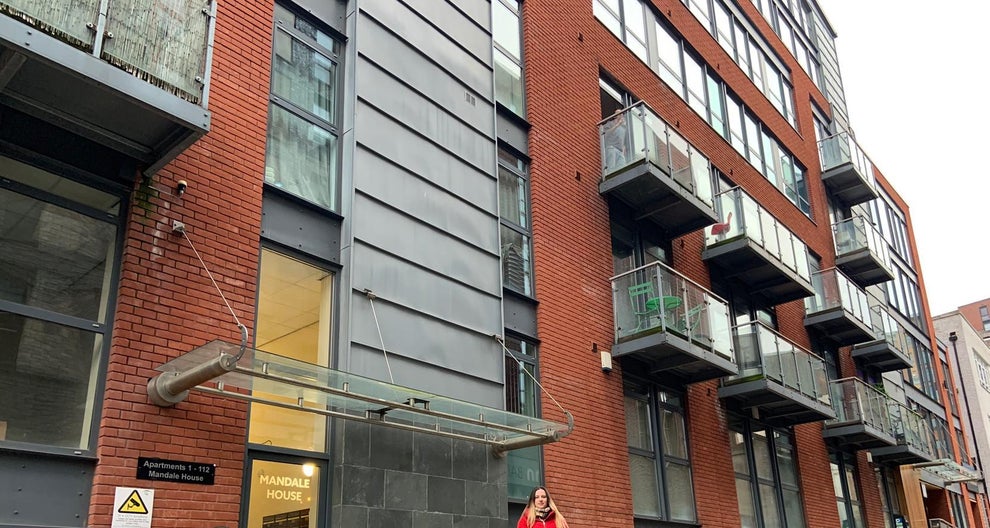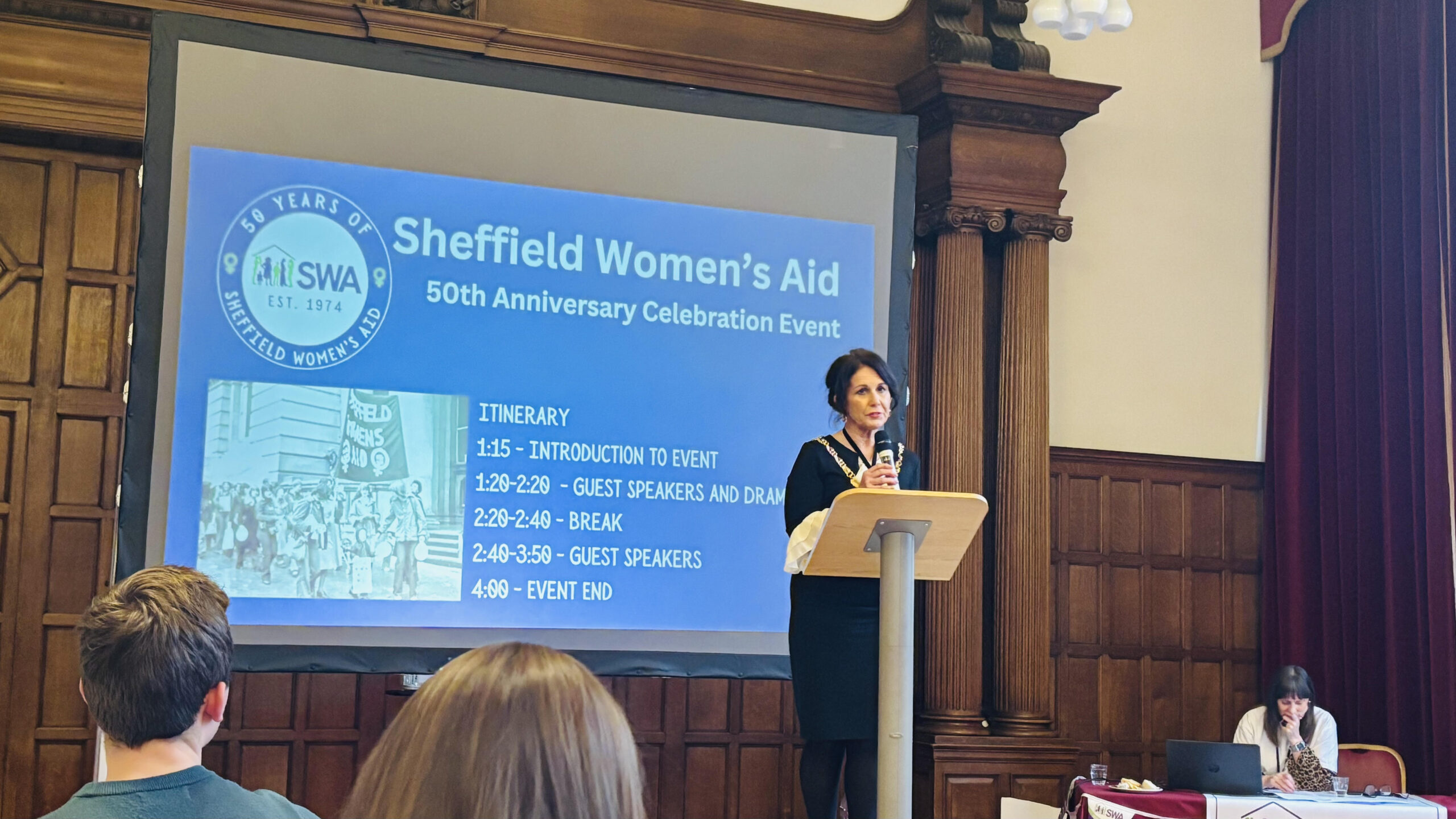Image by Olivia Hill, resident of Mandale House apartment block
Major building defects – such as the lack of cavity barriers, internal compartmentation issues, wooden balconies and unsafe insulation – have forced flat dwellers into paying around £50,000 for urgent fire safety repairs in Sheffield.
Three and a half years since the tragedy at Grenfell, the government has unveiled a £3.6bn fund to fix dangerous cladding on high-rise buildings in England, with the offer of loans to leaseholders to solve similar problems in shorter buildings under 18m.
36 buildings in the city have registered for the government’s fund, according to Sheffield Cladding Action Group (SCAG), but there are fears loans are not being distributed quickly enough and cladding removal from all affected buildings could take years due to the lack of specialist contractors.
The campaigning organisation SCAG was set up by a group of leaseholders from four buildings across Sheffield affected by unsafe cladding and other building defects which are causing fire safety issues. It works closely with the council, South Yorkshire Fire, and the MP for Hallam, Olivia Blake and MP for Central Sheffield, Paul Blomfield.
Olivia Hill, campaigner and co-founder of SCAG, is a final-year PhD student at the University of Sheffield. After finding out in October that her building, Mandale House, had failed the external wall survey and various other safety problems, she joined up with other leaseholders and began investigating the seriousness of the issue in the city.
“It’s not ‘job done’ for the government now,” said first-time buyer Miss Hill, who has felt “let down and forgotten” during the crisis.
“It’s probably only about 20% of the problem covered. We’re constantly paying out money now for the interim costs, just to keep our building open – around £40,000 to £50,000 per flat, which has wiped out people’s equity.”
This includes the cost of fire alarms plus around £80,000 for a waking watch, a 24-hour system where trained professionals patrol the floors of the building, checking for signs of fire and sounding the alarm if a fire starts.
“Other buildings are paying way more than that, like £7,000 a week just to keep their buildings open,” says Miss Hill. “This is because if you don’t have these provisions in place, then the South Yorkshire fire department can just close down the entire building and everybody has to leave.”
Residents in the North Bank apartment block on Wicker Riverside in Sheffield were evacuated by the fire service around Christmas time last year after the building failed fire safety tests. The Wicker building is now uninsurable.
The problem doesn’t only impact the homeowners, she adds. “I can’t sell my flat now – if I wanted to move house, I probably wouldn’t be able to buy in the near future. It’s crippling the bottom of the housing market.”

Olivia Hill, front, and fellow residents at the Mandale House apartment building in Sheffield, who are part of the Sheffield Cladding Action Group. Image by Olivia Hill.
Speaking to the Mirror, 32-year-old Will Martin, a junior doctor in Sheffield, reported he now faces a £52,000 bill for his share of £6.2million of remediation work on the apartment block, which has missing fire cavity barriers and failed insulation.
He said: “To anyone who doesn’t live in one of these buildings you cannot convey the fear and anxiety that come from resting your head on a pillow meters away from flammable cladding.”
Stephen Greenhalgh, the building safety minister, has previously estimated there are as many as 1,700 high-rise buildings in England with fire safety problems that relate to non-Aluminium Composite Material cladding, such as timber or high-pressure laminate panels.




